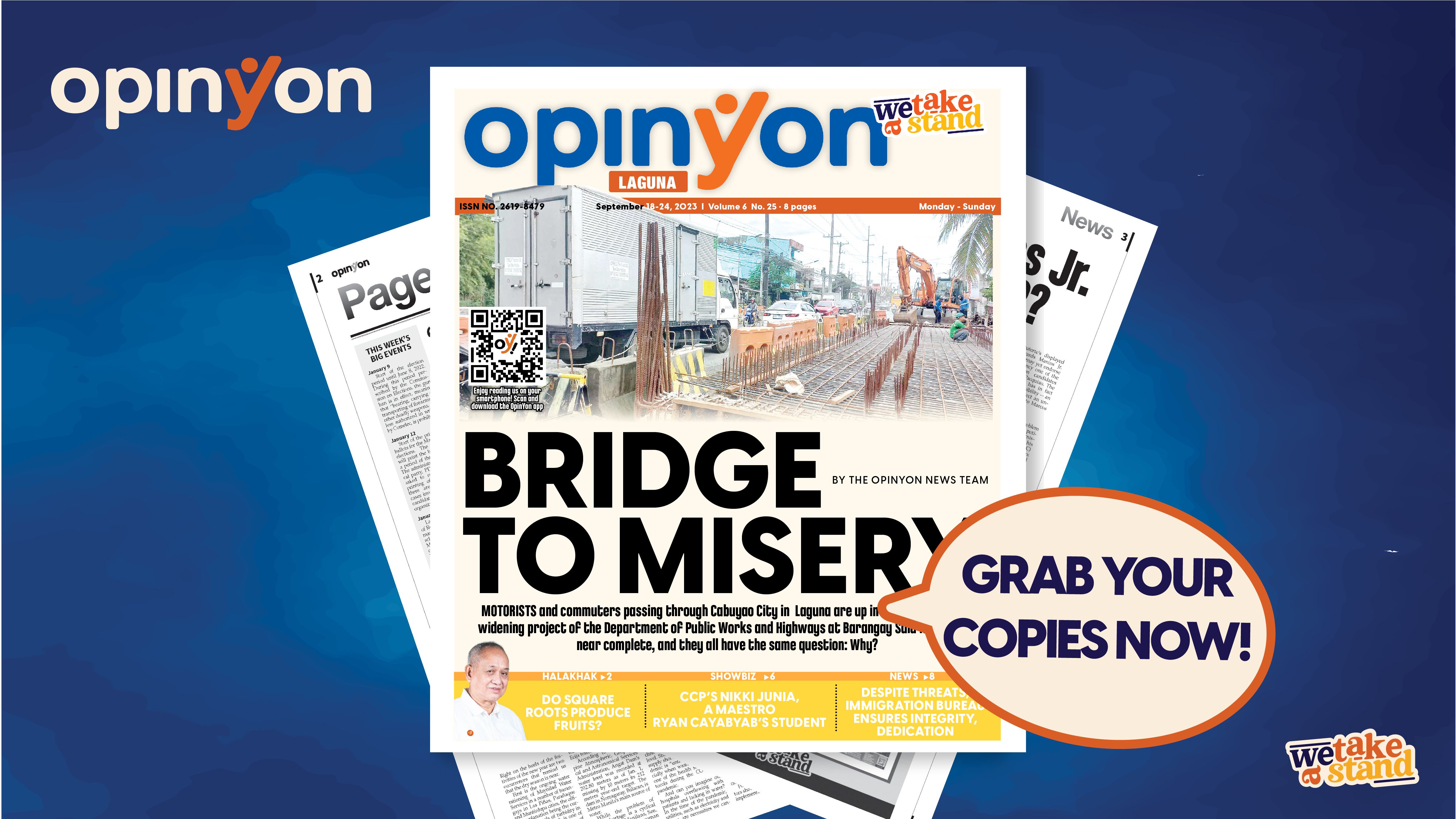Motorists and commuters passing through Cabuyao City in Laguna are up in arms. The bridge-widening project of the Department of Public Works and Highways at Barangay Sala is nowhere near complete, and they all have the same question: Why?
The mission of the Department of Public Works and Highways (DPWH), as stated in its website, is “to provide and manage quality infrastructure facilities and services responsive to the needs of the Filipino people.”
But that’s not what’s happening in Cabuyao City, Laguna, residents and motorists claim.
For more than a year now, a major infrastructure project along the National Highway in Barangay Sala has become an “instrument of torture” of sorts for motorists.
Locals are now joking that the bridge along the National Highway in that barangay should be called the “second longest bridge” in the Philippines.
The reason: the project, which was started in June 2022, is nowhere near completion, causing heavy traffic jams during rush hour.
Even officials are complaining
The problem was such that even local officials have turned to complaining to the Department of Public Works and Highways (DPWH) – Region IV-A, the main agency in charge of the bridge-widening project.
As reported in OpinYon Laguna last week, Mayor Dennis Hain had said he had called for a meeting with DPWH officials to discuss the issue.
“Ating pinatawag at binigyan na ho natin ng ultimatum ang ating mga kausap, ang DPWH at ating contractor. Kasabay ho nyan ay sumulat tayo sa Secretary ng DPWH [Manuel Bonoan] upang makahingi rin ng tulong,” Hain said in a recent Facebook live message.
Meanwhile, Laguna 2nd District Representative Ruth Mariano-Hernandez also wrote directly to Secretary Bonoan, saying that the bridge is still "below 50 percent" complete five years after it was supposed to be started. (Which begs the question: why was construction of the bridge delayed until 2022, well into the Covid-19 pandemic?)
"Notwithstanding that UPMO [DPWH's Unified Project Management Office] has never coordinated with my office regarding the subject project, whether as to its commencement or its consequent delay, numerous complaints have been received by my office," Hernandez said in her letter.
Déjà vu?
For some Lagunenses, the travails of commuters and motorists in Cabuyao City had reminded them of the infamous case of the San Pedro Bridge, also along the National Highway.
The bridge-widening project at the San Pedro Bridge was also a project of the DPWH – and has become a cautionary tale of how bureaucratic roadblocks can cause hardship for motorists.
The project was started in January 2016 and was supposed to be completed by the end of that year, but construction stalled for nearly three years before the bridge was fully re-opened sometime in 2019.
While private motorists have had to use alternate routes to bypass the bridge (which was closed for months), commuters using public transportation have had it worse.
Jeepneys were forced to pass through the San Pedro City proper, exacerbating the traffic situation at the downtown area, while buses going to Manila were forced to use the Southwoods Exit or use a nearby supermarket at the United San Pedro as their temporary terminal.
The city government of San Pedro, then under former Mayor Lourdes Cataquiz, also came under the crosshairs of irate San Pedrenses who demanded for the reason for the delay in the bridge-widening project.
Lack of coordination
It all came down to the apparent lack of coordination between the various agencies who were in charge of the project – or so claimed former City Administrator Engr. Filemon Sibulo.
In an interview with a national daily newspaper in 2019, Sibulo attributed the delay and the temporary suspension of the project to the “absence of proper planning by the project’s implementing office, the Department of Public Works and Highways (DPWH) in Region IV-A, and lack of coordination with other agencies.”
It turned out that the DPWH had to resolve issues with the informal settlers living below the bridge, the issue of right-of-way with the Philippine National Railways (PNR), whose railway line also run under the bridge; and the Department of Environment and Natural Resources (DENR) for the cutting of the trees, during the construction period.
“Isn’t it that before starting a project, all permits have to be secured first and not when the project is already in progress?” Sibulo was quoted by the newspaper.
DPWH replies
In his Facebook Live message, Mayor Hain said DPWH officials claimed to have promised to him that the project will be completed by November this year – a response that has drawn skepticism among his constituents.
“Aminado naman po ang DPWH na sila ay may pagkukulang at may pagkukulang ang kanilang contractor kaya nga ho kahapon ay naging mainit ang ating pag-uusap at talagang di tayo pumayag na ito ay patagalin pa sapagkat nagdudulot ito ng matinding abala sa ating mga mamamayan,” the city mayor reported.
That was the same response the DPWH sent in its reply to Rep. Hernandez’s letter, in which it said that the problems encountered by motorists such as potholes in the area have been "resolved" and that the contractor has been ordered to use a new type of concrete that will "lessen the curing time to utilize the outer portion of the bridge as soon as possible."
As of press time, OpinYon Laguna has reached out to officials of Cabuyao City, as well as the DPWH – Regional Office, about the issue.
#OpinYonLaguna #CoverStory #BridgeToMisery #Cabuyao #SalaBridge #DPWH #SanPedro #SanPedroBridge #DennisHain #RuthHernandez #OpinYon
